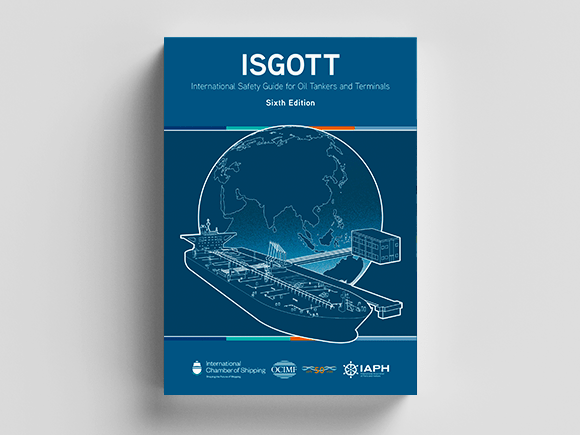OCIMF and ICS together with the International Association of Ports and Harbors revised and updated the International Safety Guide for Oil Tankers and Terminals (ISGOTT 6).
This Sixth Edition encompasses the latest thinking on a range of topical issues including gas detection, the toxicity and the toxic effects of petroleum products (including benzene and hydrogen sulphide), the generation of static electricity and stray currents, fire protection and the growing use of mobile electronic technology.
What’s new?
New significantly reappraised topics include:
- Enclosed space entry.
- Human factors.
- Safety Management Systems (SMSs), including complementary tools and processes such as permits to work, risk assessment, Lock-out/Tag-out (LO/TO), Stop Work Authority (SWA) and their linkage to the underlying principles of the International Safety Management (ISM) Code.
- Marine terminal administration and the critical importance of the tanker/terminal interface.
- Alternative and emerging technologies.
- Bunkering operations, including the use of alternative fuels such as Liquefied Natural Gas (LNG).
- Cargo inspectors.
- Alignment with OCIMF’s recently revised Mooring Equipment Guidelines.
- Maritime security and linkage to both the International Ship and Port Facility Security (ISPS) Code and industry’s maritime security Best Management Practices (BMP).
Care has been taken to ensure that where the guidance given in previous editions is still relevant and accurate, any amendments, changes or deletions have only enhanced the content and not diminished the ethos of ensuring the health, safety and environmental protection of those who use the guide.
The Ship/Shore Safety and Bunkering Operations Checklists have also been completely revised to reflect changes in the understanding of the impact of human factors in their effective use. The importance of ensuring that individual and joint responsibilities for the tanker and the terminal are clearly communicated before arrival, as well as when alongside, is central to this objective.
Both checklists are now available and free to download.

